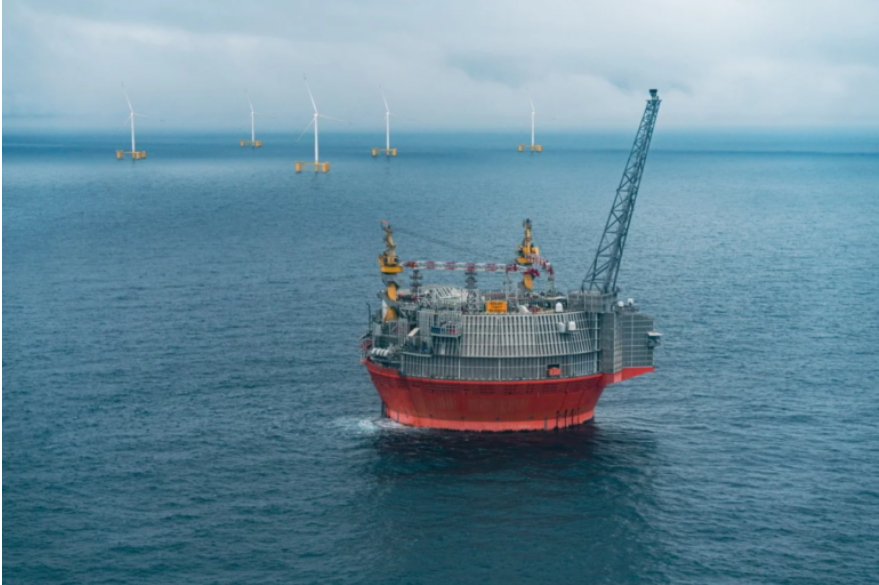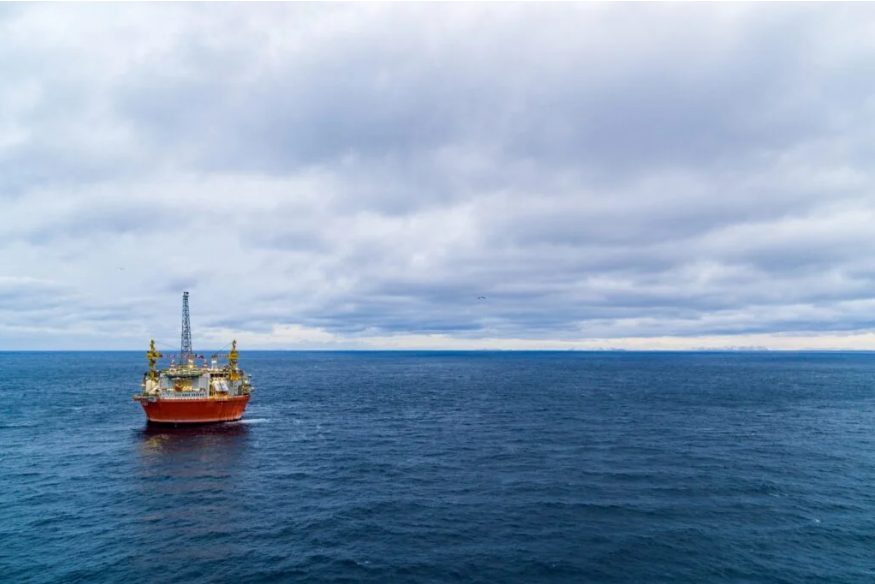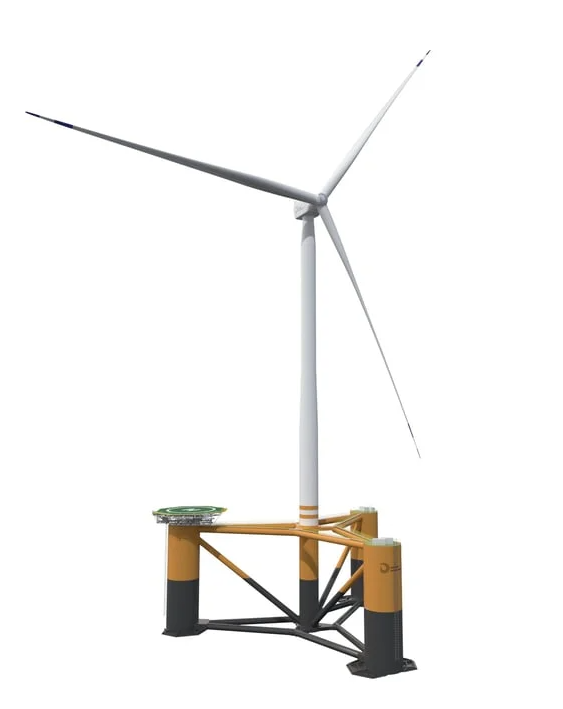
Vegard Bruaset, Vår Energi’s VP Barents Sea Area, remarked: “The government has decided that all parts of society must be electrified to reach Norway’s climate targets. This requires the development of new renewable power generation. Vår Energi is exploring opportunities to make the power cable and necessary capacity on the platform available precisely to contribute to this. Odfjell Oceanwind and Source Galileo will be the developer and owner. Vår Energi has no plans to enter into commercial or operational commitments in the wind park.”
The Norwegian player explains that the project is currently in an early phase, and multiple factors are being studied before a concept selection and a development decision can be made. This includes regulatory framework conditions, including incentives and a development licence from the authorities. According to Vår Energi, the preliminary plan is to build three to five floating wind turbines at Goliat, each with a capacity of 15 MW, so that GoliatVind may contribute up to 75 MW of installed capacity, depending on the project’s scope.
While current operations on Goliat require about 50 MW, the project can increase overall power generation in the Hammerfest region, regardless of the scope. The preliminary planned production start-up is in 2026-2027. As good coexistence with fisheries interests in the region is considered to be an important prerequisite for the project to succeed, the company confirms that dialogue with relevant fisheries organisations and technical studies on Goliat have been initiated.
Located in the Barents Sea, 50 kilometres southeast of the Snøhvit field, the Goliat field is situated in production licence 229, which has been extended until 15 May 2042. Vår Energi is the operator of the licence with a 65 per cent working interest and its partner is Equinor with the remaining 35 per cent. The Goliat field was discovered in 2000, and the plan for development and operation (PDO) was approved in 2009. Developed with a cylindrical FPSO vessel, the field includes eight subsea templates with a total of 32 well slots tied back to the FPSO.
The FPSO Goliat is a 64,000-tonne platform, 107 metres in diameter, with 14 anchor lines and a 100,000 b/d production capacity. The Goliat field came on stream in 2016 and has been supplied with power from shore since the start. This reduces CO2 emissions by 300,000 tonnes annually, the equivalent of emissions from 100,000 cars. Vår Energi aims to reduce overall greenhouse gas emissions from its own production (scope 1) by 50 per cent by 2030, compared with the 2005 level.
“Vår Energi aspires to be a leader in ESG (Environment, Social and Governance) and a preferred partner on the Norwegian shelf. We believe that GoliatVind can help bolster these ambitions if the project is realised,” concluded Bruaset.

In a separate statement, Odfjell Oceanwind confirmed the collaboration with Source Galileo Norge and Vår Energi on GoliatVIND floating offshore wind park, which is planned with grid connection via the Goliat FPSO to the Hammerfest region. As GoliatVIND is planned with up to 75 MW installed capacity, this corresponds to approximately 0.3 TWh of supplied energy to the Hammerfest region in an average year.
Simen Lieungh, Chairman of the Board of Odfjell Oceanwind, highlighted: “Odfjell Oceanwind has matured technology and solutions for floating offshore wind that are also qualified for the Barents Sea. In parallel, we have developed a supply chain that can help us realise wind parks of this type. The solutions to be demonstrated on GoliatVIND are standardised and can be used in all locations in the North Atlantic suitable for floating offshore wind.
“This is, therefore, a very important project for us, and one that will enable a rapid spread and scaling of the technology both to other projects in Norway and abroad. Systematic work over several years means that we can develop GoliatVIND as early as 2026 if all external factors are in place.”
Based on Odfjell Oceanwind’s statement, GoliatVIND has the potential to be the first offshore wind park in an Arctic location while the water depth of 300-400 meters in the area is considered “ideal” for the company’s Deepsea Star floating wind foundation design. Vår Energi and Equinor have granted the GoliatVIND consortium rights to use the Goliat FPSO cable infrastructure to connect to the onshore grid.
Per Lund, CEO of Odfjell Oceanwind, said: “GoliatVIND represents a perfect stepping-stone for Odfjell Oceanwind to demonstrate our Deepsea Star design, including our supply chain and our ability to deliver projects in a safe and reliable manner. The Odfjell companies have long experience in operating steel semisubmersibles in the arctic Barents region, and we look forward to working closely with our project development partner Source Galileo to realise this project.”

The Norwegian floating offshore wind specialist outlines that the design for the Deepsea Star moored semisubmersible floating wind foundation in steel is currently undergoing Basic Design Approval (BDA) by DNV for a multi-locational design basis, qualifying the design for use in all relevant locations for floating wind in the North Atlantic region, including all relevant Scotwind areas, INTOG areas, Utsira Nord, in addition to the Norwegian Sea and Barents Sea. The BDA process for Deepsea Star follows the recent DNV approval achieved for the Deepsea Semi 12MW design.
Gunnar Birkeland, CEO of Source Galileo Norge, underscored: “GoliatVIND is a very exciting, yet challenging project for Source Galileo. Subject to final investment decisions, it will be our first floating offshore wind project. The location outside Finnmark north of Norway represents challenging environmental conditions, but the local infrastructure like ports and bases are representative of what we will face when developing similar projects across Europe.
“The knowledge we will gain together with Odfjell Oceanwind from developing and executing a project like this is invaluable for our journey towards floating offshore wind becoming an important part of the future energy mix.”
A final investment decision for GoliatVIND is subject to further maturation of the project including but not limited to regulatory clarifications with relevant authorities, an environmental impact assessment, active dialogue with other users of the Barents Sea like fisheries as well as the consortium being able to demonstrate that the project will be profitable.
“GoliatVIND is exciting because Norwegian offshore wind technology can be demonstrated in a demanding area. Such projects are also crucial to achieve our commitments in the Paris Agreement before 2030. The project enables qualification of solutions and an early investment in the local supplier industry, which are important prerequisites for realising other and bigger offshore wind projects,” concluded Birkeland.